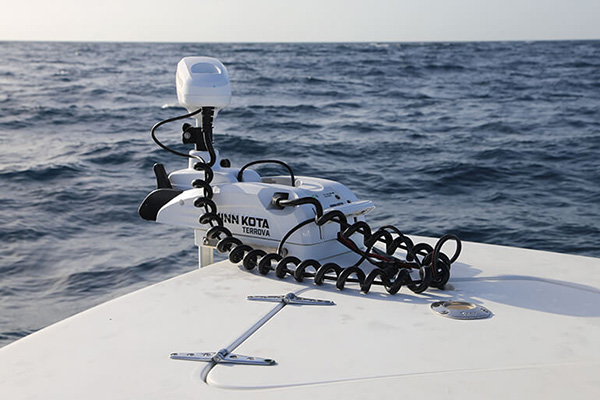Know How, Boating Equipment Tips, How to
Using a Trolling Motor for Fishing – Tips and Benefits
Using a Trolling Motor for Fishing
Fishing is a timeless outdoor pursuit enjoyed across the globe. Whether on calm lakes or open oceans, during daylight or under the stars, in freshwater or saltwater, angling has captured the hearts of both seasoned experts and novice enthusiasts for generations. The integration of a trolling motor introduces an exciting dimension to fishing, accessible to all skill levels. This article delves into the essence of a trolling motor, the diverse categories available, key considerations for purchasing, the installation process, and valuable tips for optimizing its use.
What is a Trolling Motor?
At its core, a trolling motor is an apparatus designed to propel fishing vessels, kayaks, or watercraft of any kind. Trolling motors can be categorized into two distinct groups: electric and gas motors. Electric trolling motors, drawing power from batteries, offer versatility in both freshwater and saltwater environments. In contrast, gas motors operate on petrol, providing greater force suitable for larger boats.
Benefits of Using a Trolling Motor
The advantages of incorporating a trolling motor into your fishing arsenal are numerous and transformative:
- Enhanced Mobility and Maneuverability: Trolling motors empower anglers to navigate waters with remarkable precision and agility, making position adjustments effortless.
- Serenity of Movement: Glide silently across the water’s surface, minimizing disturbances that might otherwise spook wary fish.
- Extended Coverage: The ability to cover expansive areas increases your chances of locating fish hotspots.
- Targeted Fishing: Pinpoint specific locations without being tethered to a single spot, thereby optimizing your catch potential.
- Amplified Catch Rate: The combination of mobility, stealth, and targeted fishing translates into more successful catches.
Exploring Types of Trolling Motors
Among trolling motors, three primary variants dominate the market: electric motors, gas motors, and paddle motors.
Electric Motors: Powered by batteries, electric motors are suited for smaller boats and kayaks. They excel in shallow waters and tranquility, presenting an economical option compared to their counterparts.
Gas Motors: Fueled by petrol or diesel, gas motors provide substantial thrust, rendering them ideal for larger vessels and deeper waters. This power comes at the cost of increased noise and expense.
Paddle Motors: Human-powered paddle motors cater to lightweight fishing boats. They offer superior maneuverability but are best suited for shallow waters and small water bodies, often used in conjunction with electric or gas motors.
Points to Ponder When Purchasing a Trolling Motor
As you contemplate acquiring a trolling motor, several factors deserve careful consideration:
- Cost: Trolling motors span a wide price range, contingent on type and power. Electric motors generally offer affordability, while gas motors lean towards a higher price point.
- Power: Linked closely to cost, electric motors boast quiet operation and energy efficiency. Gas motors, while potent, are noisier and pricier.
- Durability: Electric motors tend to be more resilient, though they necessitate regular upkeep. The durability equation is also influenced by the type of watercraft.
- Installation: To mount a trolling motor, it’s advisable to consult a professional, especially if you lack experience. Securely attaching the motor to the transom or stern of the boat is paramount. Ensuring proper battery connection and power line attachment follows, culminating in a successful test run to validate functionality before embarking on your angling adventure.
Tips for Optimizing Trolling Motor Use
Effectively utilizing a trolling motor requires finesse. The following tips will elevate your trolling motor experience:
Regular Maintenance and Care: Adhering to a regular maintenance routine guarantees optimal performance. Regularly inspect connections, maintain battery charge, and keep the motor clean.
Weather Considerations: Prior to setting out, appraise weather conditions. This informs the appropriate motor mount and the ideal speed for your voyage.
Motor Mount Selection: Select the suitable motor mount by factoring in your boat type, motor size, and the style of fishing you intend to undertake.
In conclusion, integrating a trolling motor into your fishing escapades offers a range of advantages that cater to both novice and seasoned anglers. By comprehending the diverse types, considering key aspects when purchasing, mastering the installation process, and heeding essential tips for use, you can harness the full potential of a trolling motor, amplifying your angling success and enjoyment.

